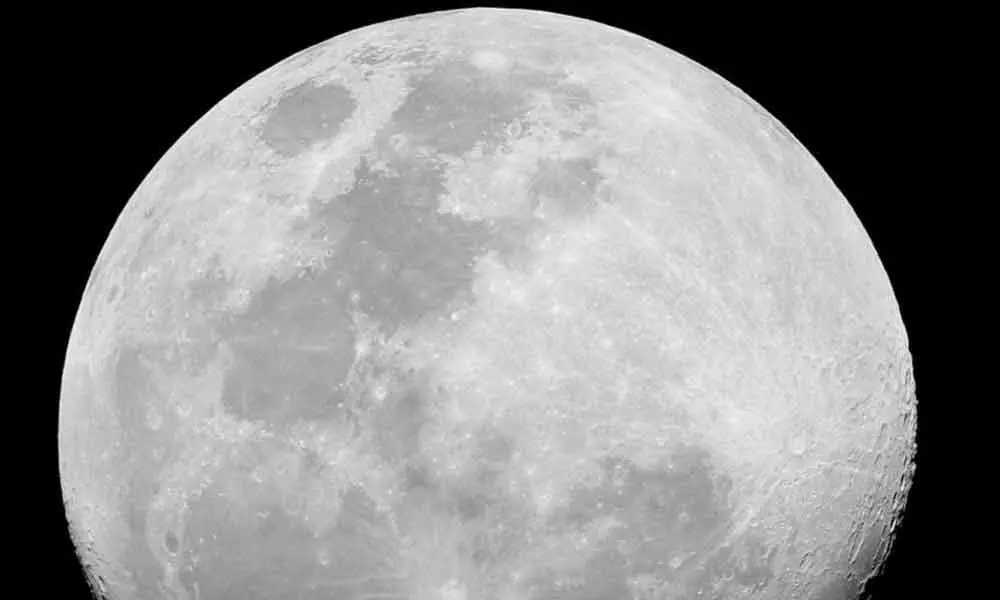Live
- Rama Sena leader Kambala joins BJP
- Now, cattle to be issued Aadhaar ID
- Former I&PR chief in ACB net
- Naidu presents wishlist to Centre
- MyVoice: Views of our readers 26th Dec 2024
- Empowering lives: One drop at a time
- Pros & cons of simultaneous polls
- Sustain Greenery: Meagre Rise In Forest Cover
- Boxing Day Test Weather Forecast: Rain Delays Expected on Day 3 and Day 4 in Melbourne
- Baby John Twitter Reviews: Varun Dhawan Impresses, But Fans Feel the Remake Lacks Theri's Charm
Just In
Ice Deposits on the Moon May Not All Be from the Same Time, Study Reveals


Some ice deposits found on the Moon's south pole may be much more recent than previous estimates that they are all billions of years old, according to a study that may boost the already growing interest in exploring this part of the lunar surface.
Some ice deposits found on the Moon's south pole may be much more recent than previous estimates that they are all billions of years old, according to a study that may boost the already growing interest in exploring this part of the lunar surface.
The researchers, including those from Brown University in the US, observed the data from NASA's Lunar Reconnaissance Orbiter — which has been orbiting the Moon since 2009 — and noted the ages of large craters in which evidence for south pole ice deposits was found.
The study, published in the journal Icarus, noted that counting the number of smaller craters formed inside the larger ones helped the scientists date the craters.
Since, the researchers had an approximate idea of the pace of asteroid and comet impacts over time, counting the smaller inner craters helped them establish the ages of the terrains.
Majority of the reported ice deposits were found within large craters formed more than 3.1 billion years ago, the study noted.
The researchers also found evidence for frozen water in smaller craters which they said seemed quite freshly formed — suggesting that some of the deposits on the south pole got there relatively recently.
"That was a surprise," said co-author of the study Ariel Deutsch from Brown University.
"There hadn't really been any observations of ice in younger cold traps before," Deutch said.
The researchers said that the ice found in the recent craters may also have different sources.
They said that the older ice could have originated from water-bearing comets, and asteroids impacting the surface, or through volcanic activity that drew water from deep within the Moon.
However, they added that there aren't many big water-bearing comets or asteroids around in recent times, and volcanism is believed to have ceased on the Moon over a billion years ago.
So, the researchers speculated that the more recent ice deposits would have required different sources such as bombardment from micrometeorites or implantation by solar wind.
The best way to find out for sure, they said could be to send spacecrafts to the lunar south pole to get some samples.

© 2024 Hyderabad Media House Limited/The Hans India. All rights reserved. Powered by hocalwire.com






